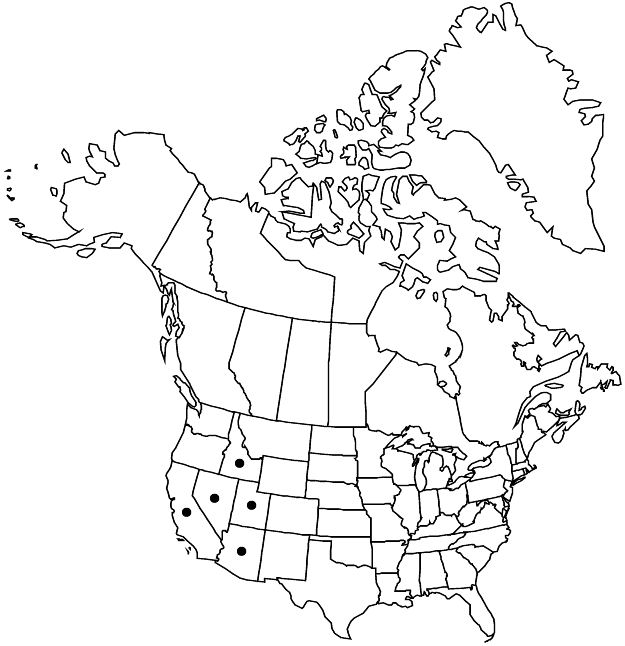Euphorbia ocellata subsp. ocellata
Stems 10–35 cm, glabrous. Leaves: stipules 0.5–1.6 mm, glabrous; petiole 0.3–1.2 mm, glabrous; blade 2.3–13 × 1.5–6 mm, apex acute, occasionally mucronate, surfaces glabrous; lateral-veins frequently visible abaxially. Peduncle 0.9–2 mm. Involucre 1–1.8 × 1.3–2.4 mm, glabrous; gland appendages absent. Pistillate flowers: ovary glabrous. Capsules 1.4–2.7 × 1.9–2.6 mm, glabrous; columella 1.4–2 mm. Seeds whitish gray, ovoid, 1.1–1.6 × 0.9–1.3 mm, rugose or smooth.
Phenology: Flowering and fruiting early spring–fall.
Habitat: Sandy soils, dunes, river washes, hard clay soils, roadsides.
Elevation: 80–1000 m.
Distribution

Ariz., Calif., Idaho., Nev., Utah.
Discussion
Plants with smooth, round seeds and larger, ovate to lanceolate (and not usually falcate) leaves have been segregated as E. ocellata subsp. arenicola. Leaf size and shape and seed surface sculpturing, however, vary considerably across the species range, and most individuals appear intermediate. Therefore a variable and more broadly defined subsp. ocellata is recognized here.
Selected References
None.
Lower Taxa
"connate" is not a number. "distinct" is not a number."connate" is not a number. "distinct" is not a number.